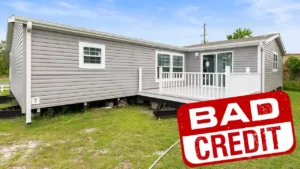Mortgagerateslocal.com – If you’re in the market for a new home, or looking to refinance your existing one, you might be wondering how to get the best deal on your mortgage. After all, a mortgage is one of the biggest financial commitments you’ll ever make, and even a small difference in interest rates can have a huge impact on your monthly payments and total interest costs.
But how do you find the best mortgage rates in a competitive and complex market? How do you compare different offers from different lenders and choose the one that suits your needs and budget? And how do you negotiate with lenders to get the lowest possible rate and fees?
We’ll show you how to shop for a mortgage and compare rates from multiple lenders, how to improve your credit score and increase your chances of approval, how to choose the right type of mortgage and loan term for your situation, and how to make extra payments or refinance your mortgage to save even more money in the long run.
By following these tips, you could save thousands of dollars on your mortgage and achieve your homeownership goals faster and easier. Let’s get started!
Why Shopping for a Mortgage Matters
You might think that all mortgage rates are the same, or that the difference between them is negligible. But that’s not true. Mortgage rates can vary significantly from one lender to another, and even from one day to another, depending on various factors such as market conditions, your credit profile, the type and size of your loan, the location and value of your property, and the fees and points you pay upfront.
According to a study by Freddie Mac, borrowers who applied with two different lenders reduced their mortgage rate by an average of 0.1 percentage point, or 10 basis points, from 2010 to 2021. That might not sound like much, but over the life of a 30-year mortgage, that could translate into thousands of dollars in savings.
For example, let’s say you want to borrow $300,000 to buy a home, and you get two offers from different lenders: one at 3.5% and one at 3.6%. The difference in monthly payments would be $17, or $204 per year. Over 30 years, that would add up to $6,120 in savings. Not bad, right?
But what if you shop around even more and find a lender who offers you 3.4%? That would lower your monthly payment by $34, or $408 per year, compared to the 3.6% offer. Over 30 years, that would amount to $12,240 in savings. That’s enough to buy a new car, or take a nice vacation, or invest for your retirement.
And that’s not all. Shopping for a mortgage can also help you find the best terms and conditions for your loan, such as the type of interest rate (fixed or adjustable), the loan term (15, 20, or 30 years), the down payment requirement, the closing costs, and the prepayment penalties. These factors can also affect your overall cost and affordability of your mortgage, so it’s important to compare them carefully and choose the option that works best for you.
How to Save Thousands on Your Mortgage by Shopping for the Best Rates
So, how do you shop for a mortgage and compare rates from different lenders? Here are some steps you can follow to make the process easier and more effective:
- Check your credit score and report. Your credit score is one of the main factors that lenders use to determine your eligibility and interest rate for a mortgage. The higher your score, the lower your rate will be, and vice versa. Therefore, it’s a good idea to check your credit score and report before you apply for a mortgage, and see if there are any errors or issues that you can fix or improve. You can get a free copy of your credit report from each of the three major credit bureaus (Equifax, Experian, and TransUnion) once a year at annualcreditreport.com. You can also check your credit score for free from various sources, such as your bank, credit card issuer, or online service. Ideally, you want to have a credit score of at least 620 to qualify for a conventional mortgage, and higher than 740 to get the best rates. If your score is lower than that, you might want to work on improving it by paying your bills on time, paying down your debt, and avoiding new credit inquiries.
- Get preapproved for a mortgage. A preapproval is a letter from a lender that states how much they are willing to lend you, based on your income, assets, debts, and credit history. Getting preapproved for a mortgage can help you in several ways: it can show you how much you can afford to spend on a home, it can make you more attractive to sellers and agents, and it can give you a more accurate estimate of your interest rate and monthly payment. To get preapproved, you’ll need to provide some basic information and documents to the lender, such as your income statements, bank statements, tax returns, and identification. The lender will then check your credit and verify your information, and give you a preapproval letter that is valid for a certain period of time, usually 60 to 90 days. You can get preapproved by multiple lenders, and compare their offers to see which one gives you the best deal.
- Shop around and get quotes from multiple lenders. Once you have a preapproval letter, you can start shopping around and getting quotes from different lenders. You can do this online, by phone, or in person, depending on your preference and availability. You can also use a mortgage broker, who is a professional who works with multiple lenders and can help you find the best deal for your situation. However, keep in mind that brokers might charge a fee for their service, which could add to your closing costs. When you shop around, you should aim to get at least three to five quotes from different lenders, and compare them carefully. You should look at not only the interest rate, but also the annual percentage rate (APR), which reflects the total cost of the loan, including the fees and points. You should also look at the loan estimate, which is a document that shows you the details of the loan, such as the loan amount, term, type, rate, fees, closing costs, and monthly payment. You should also ask about any special features or requirements of the loan, such as the down payment, the escrow account, the private mortgage insurance, the prepayment penalty, and the rate lock.
- Negotiate with lenders and choose the best offer. After you get quotes from multiple lenders, you can use them to negotiate and get a better deal. You can ask the lenders to match or beat the lowest rate or fee that you found, or to waive or reduce certain charges, such as the origination fee, the appraisal fee, or the title insurance. You can also ask for discounts or incentives, such as a lower rate if you set up automatic payments, or a cash-back bonus if you open a checking or savings account with the lender. Don’t be afraid to haggle and ask for the best possible terms, as lenders are often willing to compete for your business and make concessions. However, don’t go overboard and make unrealistic or unreasonable demands, as that could backfire and ruin your chances of getting approved. Once you negotiate and find the best offer, you can choose the lender and lock in your rate. A rate lock is an agreement between you and the lender that guarantees your interest rate for a certain period of time, usually 30 to 60 days, until you close on the loan. A rate lock can protect you from rising interest rates, but it can also prevent you from taking advantage of lower rates if they drop. Therefore, you should only lock in your rate when you are confident that you have found the best deal and that you are ready to close on the loan.
How to Improve Your Credit Score and Increase Your Chances of Approval
As we mentioned earlier, your credit score is one of the most important factors that lenders use to determine your eligibility and interest rate for a mortgage. Therefore, improving your credit score can help you get approved for a mortgage and save money on your interest rate. Here are some tips on how to improve your credit score and increase your chances of approval:
- Pay your bills on time. Your payment history is the most influential factor in your credit score, accounting for 35% of it. Therefore, paying your bills on time, every time, is the best way to improve your credit score and show lenders that you are a responsible borrower. This includes not only your credit card bills, but also your utility bills, rent, student loans, car loans, and any other debt that you have. If you have trouble remembering or managing your payments, you can set up reminders or automatic payments to avoid missing or late payments.
- Pay down your debt. Your credit utilization ratio, which is the amount of debt you have relative to your credit limit, is the second most influential factor in your credit score, accounting for 30% of it. Therefore, paying down your debt, especially your high-interest credit card debt, can improve your credit score and lower your interest costs. Ideally, you want to keep your credit utilization ratio below 30%, and lower if possible. For example, if you have a credit card with a $10,000 limit and a $3,000 balance, your credit utilization ratio is 30%. If you pay off $1,000 of your balance, your credit utilization ratio drops to 20%. This can improve your credit score and show lenders that you are not overusing your credit.
- Avoid new credit inquiries. Every time you apply for new credit, such as a credit card, a loan, or a mortgage, the lender will perform a hard inquiry on your credit report, which can lower your credit score by a few points. Therefore, you should avoid applying for new credit in the months leading up to your mortgage application, as this can hurt your credit score and make you look desperate for credit. However, keep in mind that when you shop for a mortgage and get quotes from multiple lenders, these inquiries are usually treated as a single inquiry, as long as they are done within a short period of time, usually 14 to 45 days. This means that you can shop around for the best rate without hurting your credit score too much.
- Dispute any errors or fraud on your credit report. Sometimes, your credit report might contain errors or inaccurate information, such as a late payment that you actually paid on time, a closed account that is still showing as open, or a fraudulent account that was opened in your name without your consent. These errors can negatively affect your credit score and your chances of getting approved for a mortgage. Therefore, you should review your credit report carefully and dispute any errors or fraud that you find with the credit bureaus and the creditors. You can do this online, by phone, or by mail, and you’ll need to provide evidence to support your claim, such as receipts, statements, or identity documents. The credit bureaus and the creditors are required to investigate and resolve your dispute within 30 days, and if they find that the information is indeed incorrect, they will remove it from your credit report and update your credit score accordingly.
By following these tips, you can improve your credit score and increase your chances of approval for a mortgage. However, keep in mind that improving your credit score is not a quick or easy process, and it might take several months or even years to see significant results. Therefore, you should start working on your credit score as early as possible, and be patient and consistent with your efforts.
How to Choose the Right Type of Mortgage and Loan Term for Your Situation
Another factor that can affect your mortgage cost and affordability is the type of mortgage and loan term that you choose. There are many types of mortgages available in the market, each with its own pros and cons, depending on your situation and preferences. Here are some of the most common types of mortgages and how to choose the best one for you:
Fixed-rate mortgage
A fixed-rate mortgage is a mortgage that has a fixed interest rate for the entire duration of the loan. This means that your monthly payment and interest rate will stay the same throughout the loan term, regardless of the market fluctuations.
A fixed-rate mortgage is a good option if you plan to stay in your home for a long time, and you want to have a stable and predictable payment that won’t change over time. However, a fixed-rate mortgage usually has a higher interest rate than an adjustable-rate mortgage, and it might be harder to qualify for, especially if you have a low credit score or a high debt-to-income ratio.
Adjustable-rate mortgage (ARM)
An adjustable-rate mortgage is a mortgage that has a variable interest rate that changes periodically, usually every year, based on a market index. This means that your monthly payment and interest rate can go up or down over time, depending on the market conditions.
An adjustable-rate mortgage is a good option if you plan to stay in your home for a short time, and you want to take advantage of a lower initial interest rate and payment that might increase later. However, an adjustable-rate mortgage can be risky and unpredictable, as you don’t know how much your payment and rate will change in the future, and you might end up paying more than you expected or can afford.
Conventional mortgage
A conventional mortgage is a mortgage that is not insured or guaranteed by the federal government, such as the FHA, VA, or USDA. A conventional mortgage is a good option if you have a good credit score, a low debt-to-income ratio, and a large down payment, as you can get a lower interest rate and avoid paying for mortgage insurance.
However, a conventional mortgage usually has stricter requirements and higher fees than a government-backed mortgage, and it might be harder to qualify for, especially if you have a low credit score or a high debt-to-income ratio.
Government-backed mortgage
A government-backed mortgage is a mortgage that is insured or guaranteed by the federal government, such as the FHA, VA, or USDA. A government-backed mortgage is a good option if you have a low credit score, a high debt-to-income ratio, or a small down payment, as you can get a lower interest rate and pay less for mortgage insurance.
However, a government-backed mortgage usually has lower loan limits and higher fees than a conventional mortgage, and it might require you to meet certain eligibility criteria, such as your income, property type, or military service.
Jumbo mortgage
A jumbo mortgage is a mortgage that exceeds the conforming loan limits set by the Federal Housing Finance Agency (FHFA), which are $548,250 for most counties in 2021. A jumbo mortgage is a good option if you want to buy a high-priced or luxury home, and you have a high income, a high credit score, and a large down payment. However, a jumbo mortgage usually has a higher interest rate and stricter requirements than a conforming mortgage, and it might be harder to find and qualify for, especially if you have a low credit score or a high debt-to-income ratio.
Interest-only mortgage
An interest-only mortgage is a mortgage that allows you to pay only the interest portion of your monthly payment for a certain period of time, usually 5 to 10 years. This means that your monthly payment will be lower during the interest-only period, but your principal balance will not decrease.
An interest-only mortgage is a good option if you expect your income to increase in the future, and you want to have more flexibility and cash flow in the present. However, an interest-only mortgage can be risky and expensive, as you will have to pay a higher interest rate and a larger monthly payment after the interest-only period ends, and you might end up owing more than your home is worth.
Balloon mortgage
A balloon mortgage is a mortgage that has a large lump-sum payment due at the end of the loan term, usually 5 to 7 years. This means that your monthly payment will be lower during the loan term, but you will have to pay a large amount of money at the end of the loan term.
A balloon mortgage is a good option if you plan to sell or refinance your home before the balloon payment is due, and you want to have a lower interest rate and payment in the meantime. However, a balloon mortgage can be risky and stressful, as you might not be able to sell or refinance your home before the balloon payment is due, and you might not have enough money to pay it off.
In addition to the type of mortgage, you also need to choose the loan term, which is the length of time that you have to repay the loan. The most common loan terms are 15, 20, and 30 years, but you can also find other options, such as 10 or 40 years.
The loan term can affect your interest rate, monthly payment, and total interest cost, depending on your situation and preferences. Here are some pros and cons of different loan terms and how to choose the best one for you:
- Shorter loan term. A shorter loan term, such as 15 or 20 years, means that you will pay off your loan faster and pay less interest over time. This can help you save money and build equity in your home sooner. A shorter loan term also usually comes with a lower interest rate than a longer loan term, which can lower your interest cost even more. However, a shorter loan term also means that you will have a higher monthly payment than a longer loan term, which can reduce your cash flow and affordability. A shorter loan term also requires you to have a higher income and a lower debt-to-income ratio to qualify for, which can limit your options.
- Longer loan term. A longer loan term, such as 30 or 40 years, means that you will pay off your loan slower and pay more interest over time. This can cost you more money and build equity in your home later. A longer loan term also usually comes with a higher interest rate than a shorter loan term, which can increase your interest cost even more. However, a longer loan term also means that you will have a lower monthly payment than a shorter loan term, which can increase your cash flow and affordability. A longer loan term also allows you to have a lower income and a higher debt-to-income ratio to qualify for, which can expand your options.
To choose the best type of mortgage and loan term for your situation, you need to consider your financial goals, your budget, your risk tolerance, and your future plans. You also need to compare different offers from different lenders, and see which one gives you the best deal and the best fit for your needs.
How to Save Thousands With Extra Payments or Refinance
Once you get a mortgage and start making your monthly payments, you might think that you’re done with the process. But that’s not true. You can still take some steps to save even more money on your mortgage and pay it off faster. Here are two of the most common and effective ways to do that:
- Make extra payments. Making extra payments on your mortgage means that you pay more than the minimum amount required by your lender each month, or that you make additional payments in between your regular payments. This can help you reduce your principal balance, lower your interest cost, and shorten your loan term. For example, let’s say you have a 30-year mortgage of $300,000 at 3.5% interest, and your monthly payment is $1,347. If you pay an extra $100 per month, you will save $26,854 in interest and pay off your loan 3 years and 9 months earlier. If you pay an extra $200 per month, you will save $48,487 in interest and pay off your loan 6 years and 8 months earlier. You can use a mortgage calculator to see how much you can save by making extra payments on your mortgage. However, before you make extra payments, you should check with your lender if there are any prepayment penalties or restrictions that might apply to your loan. You should also make sure that you have enough savings and emergency funds to cover your other expenses and unexpected situations.
- Refinance your mortgage. Refinancing your mortgage means that you replace your existing loan with a new one, with different terms and conditions, such as a lower interest rate, a shorter or longer loan term, or a different type of mortgage. This can help you save money on your interest rate, lower your monthly payment, change your loan type, or cash out some of your home equity. For example, let’s say you have a 30-year mortgage of $300,000 at 3.5% interest, and your monthly payment is $1,347. If you refinance your loan to a 15-year mortgage at 2.5% interest, your monthly payment will increase to $2,001, but you will save $113,607 in interest and pay off your loan 15 years earlier. If you refinance your loan to a 30-year mortgage at 2.5% interest, your monthly payment will decrease to $1,186, but you will pay $26,854 more in interest and pay off your loan at the same time. You can use a refinance calculator to see how much you can save by refinancing your mortgage. However, before you refinance your mortgage, you should consider the costs and benefits of the process, such as the closing costs, the break-even point, the new loan terms, and the impact on your taxes and insurance.
By making extra payments or refinancing your mortgage, you can save thousands of dollars on your mortgage and achieve your financial goals faster and easier. However, you should always do your homework and compare different options and scenarios before you make any decision, and consult with a professional if you need any advice or guidance.
Conclusion
A mortgage is one of the biggest and most important financial decisions you’ll ever make, and it can have a huge impact on your life and your future. Therefore, you should always shop for a mortgage and compare rates from different lenders, improve your credit score and increase your chances of approval.
Choose the right type of mortgage and loan term for your situation, and make extra payments or refinance your mortgage to save even more money. By following these tips, you could save thousands of dollars on your mortgage and buy your dream home without breaking the bank.




